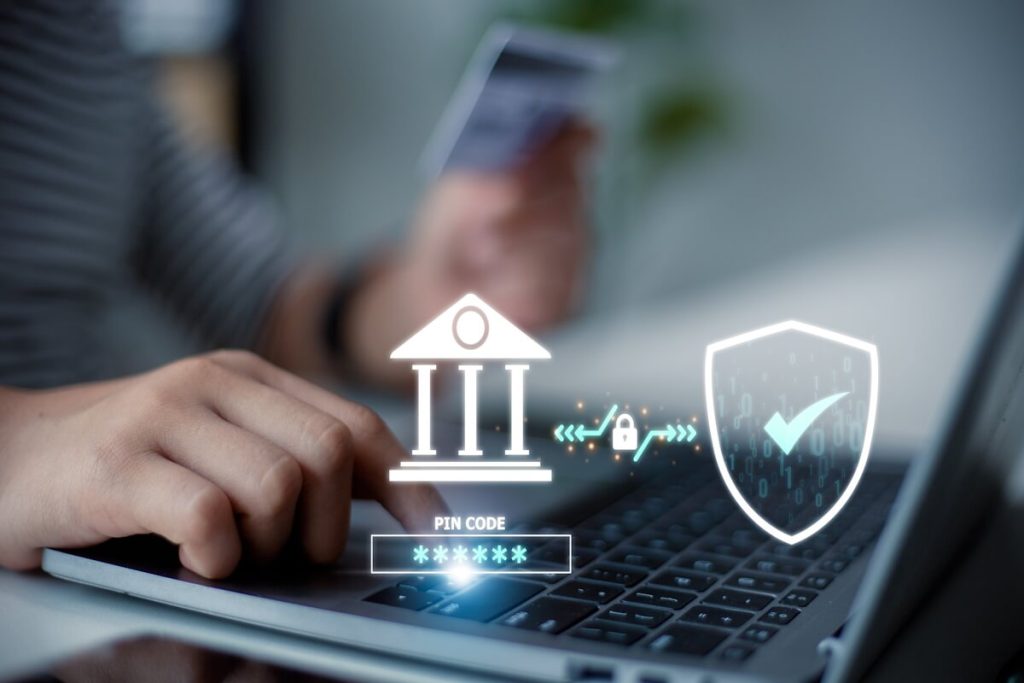In an era where digital banking has become the norm, concerns about the security of our money online are more prevalent than ever. As banks and financial institutions increasingly adopt digital technologies, it’s essential to understand how safe your money is in the digital world and what measures are in place to protect it.

The Evolution of Digital Banking
Digital banking has revolutionized the way we manage our finances. From online banking platforms to mobile apps, the convenience of managing money from anywhere, at any time, has been a game-changer. However, with this convenience comes the responsibility of ensuring robust security measures are in place to protect against cyber threats.
Common Threats to Digital Banking Security
Phishing Attacks
Phishing is one of the most common cyber threats targeting digital banking users. In a phishing attack, cybercriminals impersonate legitimate institutions to trick users into providing sensitive information, such as login credentials or credit card numbers. These attacks often come in the form of fraudulent emails, messages, or websites that appear authentic.
Malware
Malware is malicious software designed to infiltrate and damage computer systems. In the context of digital banking, malware can be used to capture keystrokes, steal login information, or redirect users to fraudulent websites. Mobile banking apps are particularly vulnerable to malware attacks, making it crucial for users to download apps only from trusted sources.
Man-in-the-Middle Attacks
In a man-in-the-middle (MitM) attack, cybercriminals intercept communication between the user and the bank. This can happen over unsecured Wi-Fi networks or through compromised devices. The attackers can then steal sensitive information or manipulate transactions without the user’s knowledge.
Identity Theft
Identity theft occurs when a cybercriminal gains access to personal information and uses it to commit fraud. In digital banking, this can involve unauthorized access to bank accounts, leading to financial loss and significant damage to the victim’s credit history.
Security Measures in Digital Banking
To combat these threats, banks and financial institutions implement a variety of security measures designed to protect users’ money and personal information.
Two-Factor Authentication (2FA)
Two-factor authentication adds an extra layer of security by requiring users to verify their identity through a second method, such as a text message or authentication app, in addition to their password. This makes it significantly harder for cybercriminals to gain unauthorized access.
Encryption
Encryption is the process of converting information into a secure format that can only be read by authorized parties. Banks use encryption to protect data transmitted between users and their servers, ensuring that even if the data is intercepted, it cannot be read by attackers.
Biometric Authentication
Biometric authentication uses unique physical characteristics, such as fingerprints or facial recognition, to verify a user’s identity. This method is increasingly popular in mobile banking apps, offering a convenient and secure way to access accounts.
Secure Coding Practices
Banks invest heavily in developing secure software to protect their systems from vulnerabilities. This includes regular updates and patches to fix security flaws and rigorous testing to identify potential weaknesses. Companies providing android app development services play a crucial role in ensuring that mobile banking apps are secure from the ground up.
Fraud Detection Systems
Banks use advanced algorithms and machine learning to detect unusual activity in users’ accounts. These systems can identify and flag potentially fraudulent transactions in real-time, allowing banks to take immediate action to prevent financial loss.
Best Practices for Users
While banks implement robust security measures, users also play a crucial role in protecting their money online. Here are some best practices to enhance your digital banking security:
Use Strong, Unique Passwords
Create strong, unique passwords for your digital banking accounts. Avoid using easily guessable information, such as birthdays or common words, and consider using a password manager to keep track of your credentials.
Enable Two-Factor Authentication
Enable two-factor authentication whenever possible. This adds an extra layer of security and makes it much harder for cybercriminals to access your accounts.
Be Wary of Phishing Scams
Be cautious of emails, messages, or websites that ask for your personal information. Always verify the authenticity of any communication from your bank by contacting them directly through official channels.
The Role of Android App Development Services
With the rise of mobile banking, the role of android app development services has become increasingly important. These services ensure that banking apps are not only user-friendly but also secure. Developers incorporate advanced security features, such as biometric authentication and encryption, into mobile banking apps to protect users’ data and transactions.
Conclusion: The Future of Digital Banking Security
Digital banking will continue to evolve, with new technologies and features enhancing the convenience and security of managing money online. As cyber threats become more sophisticated, both banks and users must stay vigilant and adopt best practices to protect against potential risks. By understanding the threats and implementing robust security measures, we can ensure that our money remains safe in the digital age.
Author Bio:- Mihir Bhatt, a tech writer, simplifies complex concepts, making innovation accessible to all. With expertise in Custom Software Development, I explore trends and breakthroughs, sharing insights through enlightening articles. Join me in decoding the ever-evolving tech landscape and unraveling the wonders of the digital world!
